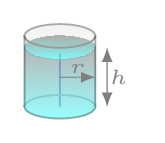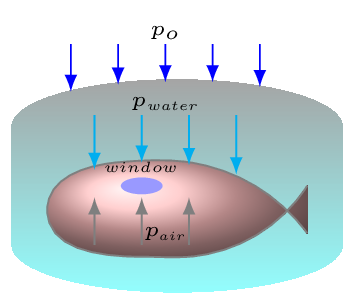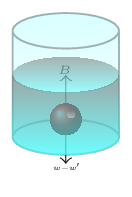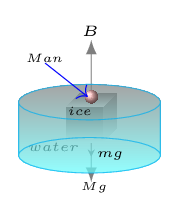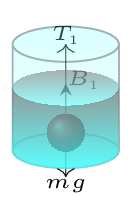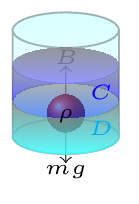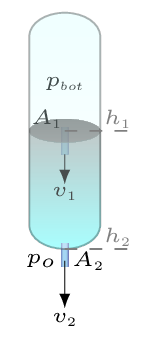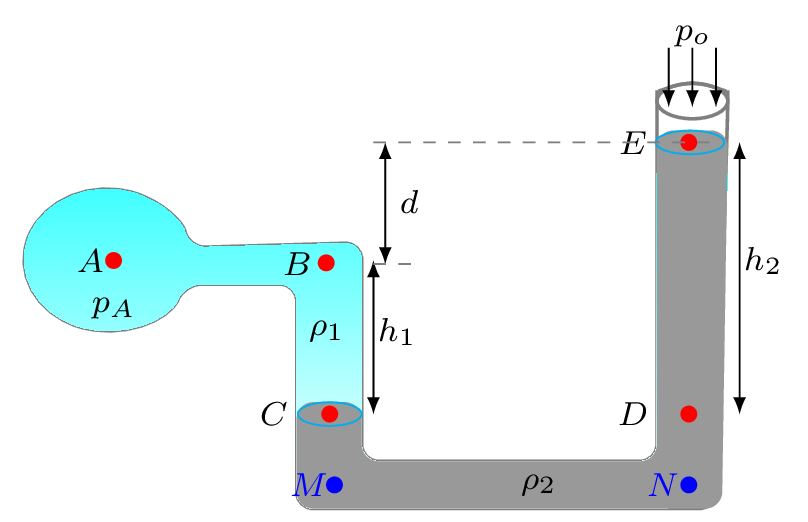Given: \(\rho_{C} = 800 \,kg/m^{3}, \) \(\rho_{D} = 1200 \,kg/m^{3}, \quad \frac{V_{D}}{V}=\frac{\rho-2a}{a}.\) Specific gravity of a body, \(SG_{b}=\frac{\rho_{b}}{\rho}.\) Total volume of the body, \(V=V_{C}+V_{D}.\) Since the body is suspended at the interface of two liquids, buoyant force must be equal to its weight.
\begin{equation*}
i.e., \quad B=mg
\end{equation*}
\begin{equation*}
\text{or,} \quad B_{C}+B_{D}=V\rho g
\end{equation*}
\begin{equation*}
\text{or,} \quad V_{C}\rho_{C}g+V_{D}\rho_{D}g=\left(V_{C}+V_{D}\right)\rho g
\end{equation*}
\begin{equation*}
\text{or,} \quad V_{C}\left(\rho_{C}-\rho\right)=V_{D}\left(\rho-\rho_{D}\right)
\end{equation*}
\begin{equation}
\text{or,} \quad V_{C} = \left(\frac{\rho-\rho_{D}}{\rho_{C}-\rho}\right) V_{D} \tag{9.3.4}
\end{equation}
\begin{equation*}
\text{But, }\quad \frac{V_{D}}{V} =\frac{\rho-2a}{a}
\end{equation*}
\begin{equation}
V_{D} = \left(\frac{\rho-2a}{a}\right)V \tag{9.3.5}
\end{equation}
Hence, from
\begin{equation*}
V=V_{C}+V_{D} = \left[\left(\frac{\rho-\rho_{D}}{\rho_{C}-\rho}\right) +1\right]V_{D}
\end{equation*}
\begin{equation*}
=\left[\left(\frac{\rho-\rho_{D}}{\rho_{C}-\rho}\right) +1\right] \left(\frac{\rho-2a}{a}\right)V
\end{equation*}
\begin{equation*}
\text{or,}\quad 1= \left[\left(\frac{\rho-\rho_{D}}{\rho_{C}-\rho}\right) +1\right] \left(\frac{\rho-2a}{a}\right)
\end{equation*}
\begin{equation*}
\therefore\quad a= \frac{\left(\rho_{C}-\rho_{D}\right)\rho}{3\rho_{C}-\rho-2\rho_{D}}
\end{equation*}
\begin{equation*}
= \frac{\left(800-1200\right)\rho}{3\times 800-\rho-2\times 1200} =400
\end{equation*}
